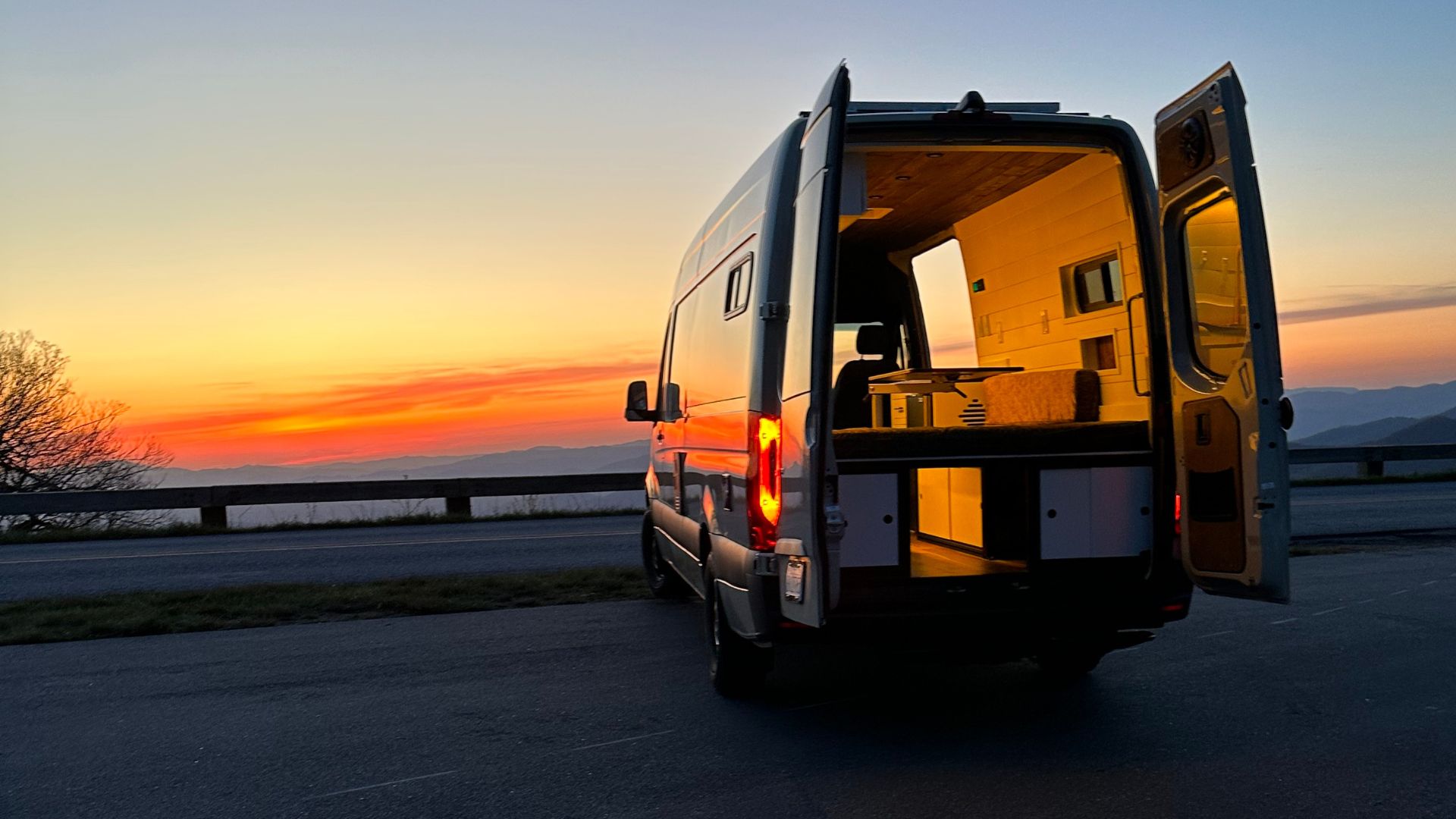With camping season ramping up, it's a great time to think about how you can build the best van conversion. A significant part of your project is using insulation to design the ideal temperature control system.
To help you on your mission to create a comfortable environment, we're sharing expert insights and practical tips.
Take a minute to read our guide. It's an overview of insulation solutions for camper vans. Explore the best materials and our installation tips.
Camper Van Insulation: What Are Your Options?
Creating a comfortable living space on the road starts with choosing the best insulation. You'll find that every "expert" has their favorite insulation. Narrowing down your choices means first exploring the unique properties and benefits of the most popular insulation materials.
3M Thinsulate
Thinsulate is a synthetic insulation material known for its high thermal efficiency and lightweight properties. It comes in batting form, making it easy to install with spray adhesive. Many van conversion enthusiasts prefer 3M Insulate for its excellent R-value and ease of application.
Foam Board
Foam board insulation, typically extruded polystyrene or polyisocyanurate, offers good thermal and moisture resistance. This rigid material can be cut to fit snugly into van cavities, providing adequate insulation.
Reflectix
Composed of foil-faced bubble wrap, Reflectix (as the name implies) is a reflective insulation material. On its own, this material is less effective than other insulation options. Combining it with different insulation materials is the best way to use reflective materials.
Spray Foam
Spray foam insulation - open-cell or closed-cell - is a liquid that expands to fill gaps and crevices, creating a seamless insulation layer. It provides excellent thermal insulation and can help seal air leaks, but it can be challenging to apply in tight spaces.
Rockwool
Also known as mineral wool, this insulation material offers excellent thermal and acoustic insulation properties. Made from natural rock materials, it's fire-resistant, moisture-resistant, and relatively easy to work with, making it a popular choice for van conversions.
Thinsulate vs. Havelock Wool
When comparing insulation materials for van conversion, you'll likely come across Thinsulate and Havelock wool. They both have similar properties. Here's a brief comparison:
R-Value
Thinsulate and Havelock wool have similar R-values, which measure the material's thermal resistance. This indicates their effectiveness in insulating against heat transfer.
Ease of Application
Thinsulate comes in batting form, making it easy to cut and install with spray adhesive. You can buy Havelock wool in loose-fill or batt form. It may require more effort to install evenly.
Durability and Longevity
Thinsulate is durable and resilient to wear and tear, making it a reliable choice for long-term insulation needs. Havelock wool offers excellent longevity and is resistant to compression, ensuring its effectiveness over time.
Ultimately, the choice between Thinsulate and Havelock wool depends on your preferences and needs. When choosing the best insulation, consider factors such as ease of installation, thermal performance, and budget.
Sealing the Envelope: Key to Effective Insulation
The primary objective when insulating your van is to seal the envelope. This involves creating a barrier between the interior living space and the external environment to minimize heat transfer.
By sealing the van's inner walls or inner box, you prevent air leakage and infiltration, which can compromise the insulation's effectiveness.
Pay attention to areas around windows, doors, and electrical penetrations. These are common points of air infiltration. Seal off these areas with sealants, weather-stripping, and insulation materials.
Sealing the envelope is essential for achieving optimal comfort inside the van, whether you want to retain heat during colder months or keep cool air in during hot weather.
R-Value: Why It Matters
R-value measures how effectively a material resists heat transfer. A higher R-value indicates more excellent resistance to heat flow. The material can better maintain desired temperatures inside the van.
This is particularly important in the confined space of a camper van, where temperature fluctuations can occur more rapidly. By selecting insulation materials with higher R-values, you can create a more comfortable interior environment while reducing the reliance on heating or cooling systems.
Combine comfort and efficiency, and you're on your way to sustainable living in your van conversion.
Insulation Application Techniques: Optimizing Comfort
Apply insulation to the walls, ceiling, and subfloor. Begin by measuring and cutting insulation materials to fit the specific dimensions of your van's interior.
Use adhesive spray or tape to secure the insulation to walls and ceilings. This creates a tight fit that helps prevent air from seeping through.
For the subfloor, lay down foam board or reflective insulation beneath the flooring material. It's an excellent way to prevent heat loss through the van's floor.
Double up the insulation layers to boost the effectiveness of insulation in the ceiling cavities. This practice increases the R-value of the insulation, providing better thermal efficiency and temperature control within the van. Simply stack additional layers of insulation material in the ceiling cavities before sealing them off.
When addressing window cutouts, your mission is to prevent heat transfer and maintain interior comfort. Consider using window covers or reflective panels, to seal off window openings when not in use. These covers help create a tighter insulation envelope.
About Thermal Breaks and Moisture Control
Enhance the effectiveness of your insulation by incorporating thermal breaks and radiant barriers. Thermal breaks interrupt heat flow, reducing thermal conductivity and minimizing heat loss or gain. Radiant barriers reflect radiant heat, further enhancing insulation performance and creating a more comfortable living space inside the van.
Addressing moisture buildup helps prevent mold growth inside the van. Install vapor barriers to block moisture and minimize condensation accumulation on interior surfaces.
Remember to address ventilation. Proper ventilation helps prevent condensation buildup and promotes air circulation. It's essential to ensure a healthier and more comfortable living space in your dream camper van.
Your Key to the Best Van Conversion
Optimizing insulation and ensuring effective moisture control is vital if you're on a mission to complete the best van conversion. Why not partner with an expert?
Boondock Van Company designs custom vans engineered for off-grid living. Our clients appreciate how well we incorporate the boondocking lifestyle with high-quality, fully functional builds.
Reach out today to explore our build packages and request a free quote.

.jpg)

.jpg)
